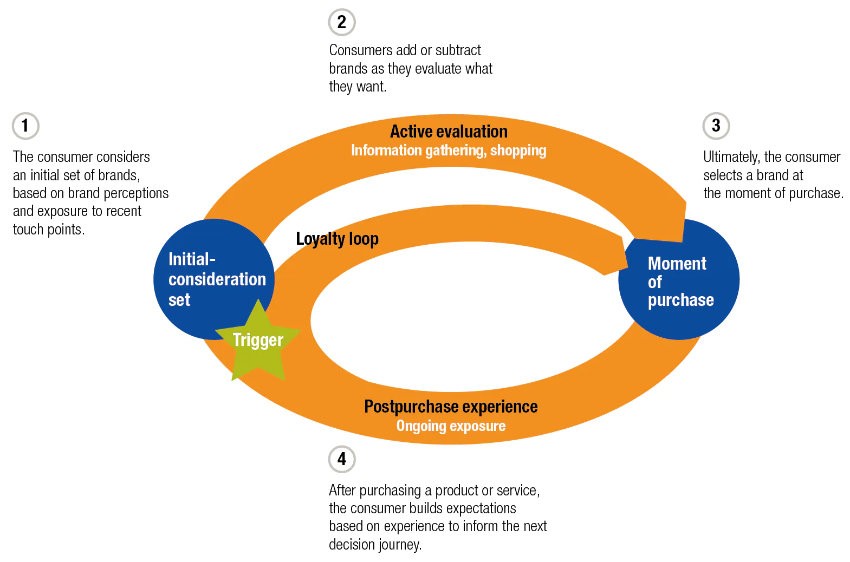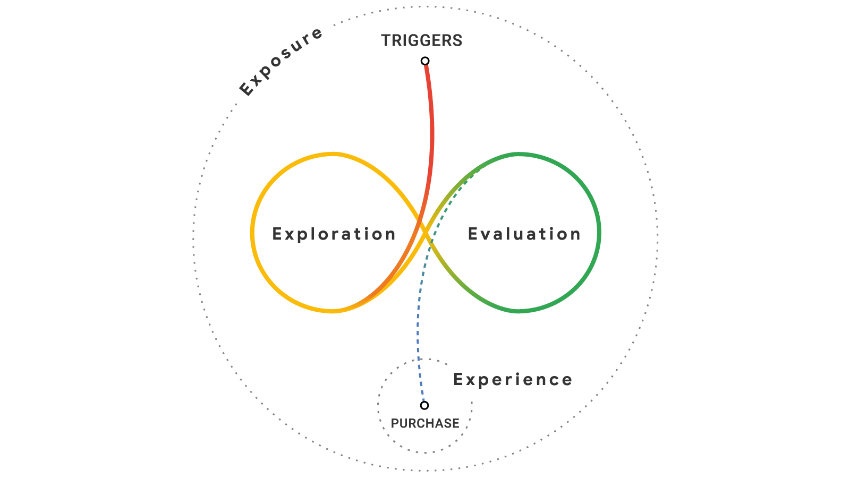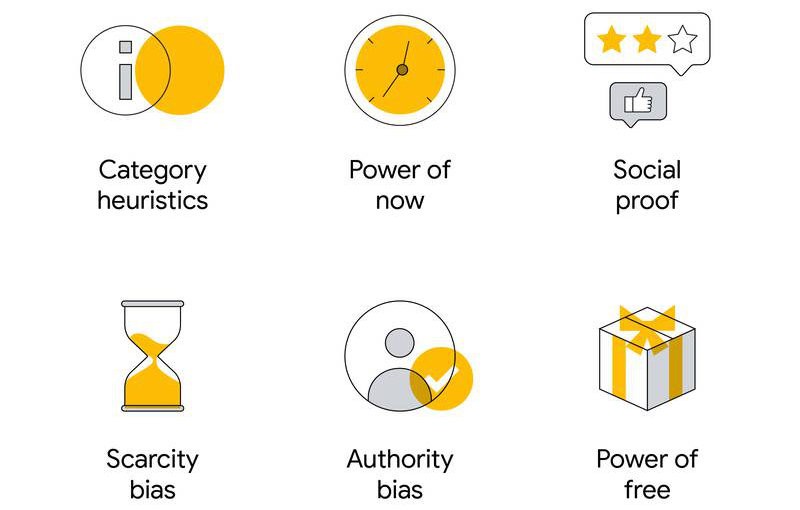Consumer Decisions
Beyond the Marketing Funnel
What are consumer decisions? What is meant when you hear Marketers talk about the consumer decision journey or the purchase decision process?
A consumer or purchase decision process or journey is the path people take before buying a product or service. It helps Marketers look at the different stages, to work out what they can do to help move these people along and ultimately, making a decision to purchase your products or services.
Traditionally we have looked at the consumer decision journey as a funnel, where the consumer moves systematically through each stage from initial consideration (Attention) to a purchase decision (Action) and onwards to loyalty and repeat business. Find out more about The Marketing Funnel. However, research has shown that with the birth of the internet and digital marketing, this is no longer the case. So what is the consumer decision journey now?
McKinseys Consumer Decision Journey
If marketing has one goal, it's to reach consumers at the moments that most influence their decisions.
If you've never heard of McKinsey, they are a global marketing company that are continually performing market research to better understand how marketing works. Back in 2009, they undertook a large research project of consumers to identify the touch points after something triggers an impulse to buy that leads to a purchase decision. Or more simply, what the consumer decision journey was. What they found, was that it wasn't a linear process as suggested by the traditional marketing funnel, but a circular journey.

The Consumer Decision Journey Stages
Initial Consideration
The journey starts when a consumer is triggered with an impulse to buy. This could be their hot water system no longer heating water or simply the desire for a new bathroom or extension. They will go through initial considerations where they build a list of different brands (businesses) they will consider before making the final purchase decision. This list can be developed from previous touch points they have with brands (eg. ex-customer, display advertising, offline ads etc) or from an initial search (eg. hot water repairs brisbane). Once they have this list they move to stage 2.
Active Evaluation
In the digital world, your consumers can't help but shop around.
This is where consumers go through their list of brands to decide which one they will ultimately go with. At this stage they may also find other brands that they hadn't considered initially and add them to the list. Regardless of where the consumer initially considered you (eg. offline or online), this stage is predominately done online; either reading your websites, checking your social profiles or reading your reviews. Through this research, they will narrow down their list of brands.
Moment of Purchase
This is where the consumer makes the final decision to buy.
Postpurchase Experience
Now you've made the sale it's important to keep the customer loyal. McKinsey talks about 2 types of loyalty; active and passive. Active loyalty is where the consumer loves your products and services and tells their friends and family, whereas passive loyalty is where they use your products or services because they aren't dissatisfied enough to look elsewhere. We'll let you work out which one is best.
Is the McKinsey Consumer Decision Journey still valid?
McKinsey has gone back to their model and re-assessed it over the years, with a full research project in 2017. What they have found is that it is still very much valid and if anything, more so with the growth in technology.
The past few years have seen exponential growth in tools that have made researching and purchasing products online vastly easier. An explosion of mobile shopping apps that showcase options, simplify pricing, compare product specifications, and facilitate peer reviews is making it possible to size up brands effortlessly.
Some of the key takeaways McKinsey has found from their latest research into this model are:
- Approximately 70% of the brand choices a consumer considers in the decision making process are from the initial consideration stage; and those brands from the initial consideration stage were twice as likely to get the sale. So you need to ensure your business is represented then.
- Active engagement in many loyalty programs is dropping. So whereas in the past you could push to keep ex-customers in the loop, now you need to put more focus on getting noticed in the initial consideration stage.
- Consumers need a good understanding of your brand and what differentiates it from the competition. This is where a good website makes a difference; giving a fuller view of the benefits and advantages of your products and services.
So there we have one new model for consumer purchase decisions. Now let's look at another.
Google's Purchase Journey
Google did a research project in 2020 of existing models which then lead onto a large scale experiment to develop their buyer decision process; which they nicknamed the "Messy Middle".

Like the McKinsey model, Google's starts with a trigger to want to buy a product or service. After being triggered, the consumer goes into twin loops where they simultaneously explore and evaluate various products and brands. This can be a quick loop or quite an extensive loop depending on how important the purchase is (eg. cost, desire etc). The consumer identifies new products and brands and evaluates them and in the process will find other products and brands until they finally come to a decision.
Both these models aren't too dissimilar and stress the importance of having clear online assets (think website) that help prospects decide if your products or services are better than your competitors. In other words, you not only need to differentiate yourself, but also help the prospect make the decision by providing all the information they may need.
After developing the model, Google then experimented to work out what biases influenced a purchase decision. These biases were:

- 1.Category heuristics:
Heuristics is when people use "rules of thumb" strategies to make decisions. An example could be always buying Australian Made products, or Organic, or Local etc. So include key product or service features that people may use for heuristic decisions. EG. Locally Made - 2.Power of now:
People want things now and don't want to wait. So if a product or service can be delivered quickly, make sure it is highlighted. EG. Same Day Service - 3. Social proof:
People like to know other people found a product or service good. So include reviews and star ratings etc. - 4. Scarcity bias:
If people think a product or service (or special price) has a limited time, they are more likely to act. EG. Only 5 left etc. - 5. Authority bias:
People will be swayed by recommendations from trusted sources. This could be an expert or an award. - 6. Power of free:
Free gifts etc are very powerful. This could be a free quote, free delivery or even something unrelated like free steak knives with....
So there we have 2 new models for the purchase journey, beyond the marketing funnel. Does that mean the marketing funnel is obsolete? We would argue that all these models have similar concepts about how someone goes from being triggered to want to buy through to the actual purchase decision, including the marketing funnel. So whilst the newer models may be more precise, the traditional marketing model is a simpler representation and often easier to understand. So we still very much use this model when developing our digital marketing strategies.
Sources:
- https://www.mckinsey.com/business-functions/marketing-and-sales/our-insights/the-consumer-decision-journey
- https://www.mckinsey.com/about-us/new-at-mckinsey-blog/ten-years-on-the-consumer-decision-journey-where-are-we-today
- https://www.thinkwithgoogle.com/intl/en-aunz/consumer-insights/consumer-journey/navigating-purchase-behaviour-and-decision-making/

